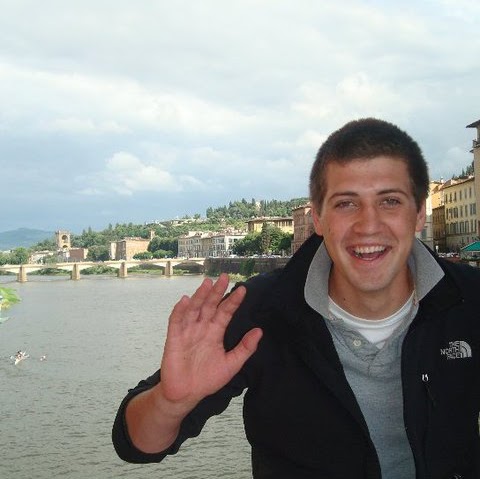Joshua E Allen
age ~39
from Oviedo, FL
- Also known as:
-
- Joshua Emmanuel Allen
- Joshua F Allen
Joshua Allen Phones & Addresses
- Oviedo, FL
- Harker Heights, TX
- 151 E Lowry Ln, Lexington, KY 40503 • 6069238752
- Olive Hill, KY
- Rush, KY
- Ashland, KY
Resumes

Joshua Allen Bristol, IN
view sourceWork:
Utilimaster
Oct 2011 to 2000
Tig welder,Mig welder,stick welder,mig tig welder
Oct 2011 to 2000
Tig welder,Mig welder,stick welder,mig tig welder
Education:
Collin career center
Willow Wood, OH
2001 to 2003
welding in welding
Willow Wood, OH
2001 to 2003
welding in welding

Joshua Allen Harrodsburg, KY
view sourceWork:
Eddie Montgomery's Steakhouse
2010 to 2000
Hospitality Manager Sawyers Downtown
Lexington, KY
2008 to 2009
Crew Leader Penn Station East Coast Subs
Lexington, KY
2007 to 2008
Assistant Manager Old Happy Days Smokehouse BBQ & Catering
2002 to 2007
General Manager The Olive Garden
Lexington, KY
2001 to 2004
Host/ Greeter McDonald's
Harrodsburg, KY
1995 to 1999
Customer Service/Maintenance
2010 to 2000
Hospitality Manager Sawyers Downtown
Lexington, KY
2008 to 2009
Crew Leader Penn Station East Coast Subs
Lexington, KY
2007 to 2008
Assistant Manager Old Happy Days Smokehouse BBQ & Catering
2002 to 2007
General Manager The Olive Garden
Lexington, KY
2001 to 2004
Host/ Greeter McDonald's
Harrodsburg, KY
1995 to 1999
Customer Service/Maintenance
Education:
University of Kentucky
Lexington, KY
1999 to 2005
Hospitality Management Association Harrodsburg High School
Harrodsburg, KY
1996 to 1999 Harrodsburg High School Marching Band
1994 to 1999
Speech & Drama Club
Lexington, KY
1999 to 2005
Hospitality Management Association Harrodsburg High School
Harrodsburg, KY
1996 to 1999 Harrodsburg High School Marching Band
1994 to 1999
Speech & Drama Club
Medicine Doctors

Joshua D. Allen
view sourceSpecialties:
Family Medicine, Internal Medicine
Work:
Norton Medical GroupNorton Medical Associates
300 High Pt Ct, Mount Washington, KY 40047
5029556129 (phone), 5029558161 (fax)
300 High Pt Ct, Mount Washington, KY 40047
5029556129 (phone), 5029558161 (fax)
Education:
Medical School
University of Louisville School of Medicine
Graduated: 2003
University of Louisville School of Medicine
Graduated: 2003
Procedures:
Allergen Immunotherapy
Arthrocentesis
Destruction of Benign/Premalignant Skin Lesions
Electrocardiogram (EKG or ECG)
Skin Tags Removal
Vaccine Administration
Wound Care
Arthrocentesis
Destruction of Benign/Premalignant Skin Lesions
Electrocardiogram (EKG or ECG)
Skin Tags Removal
Vaccine Administration
Wound Care
Conditions:
Allergic Rhinitis
Chronic Sinusitis
Abdominal Hernia
Abnormal Vaginal Bleeding
Acne
Chronic Sinusitis
Abdominal Hernia
Abnormal Vaginal Bleeding
Acne
Languages:
English
Description:
Dr. Allen graduated from the University of Louisville School of Medicine in 2003. He works in Mount Washington, KY and specializes in Family Medicine and Internal Medicine.

Joshua D. Allen
view sourceSpecialties:
Emergency Medicine
Work:
Nacogdoches Medical Center Emergency Clinic & Diagnostic Imaging
5100 Loop 500 E, Center, TX 75935
9366573030 (phone), 9365918842 (fax)
5100 Loop 500 E, Center, TX 75935
9366573030 (phone), 9365918842 (fax)
Education:
Medical School
Lake Erie College of Osteopathic Medicine, Erie Campus
Graduated: 2009
Lake Erie College of Osteopathic Medicine, Erie Campus
Graduated: 2009
Languages:
English
Description:
Dr. Allen graduated from the Lake Erie College of Osteopathic Medicine, Erie Campus in 2009. He works in Center, TX and specializes in Emergency Medicine.

Joshua A. Allen
view sourceSpecialties:
Anesthesiology, Pain Management
Work:
Coastal Pain Care
3070 College St STE 300, Beaumont, TX 77701
4098924600 (phone), 4098924605 (fax)
3070 College St STE 300, Beaumont, TX 77701
4098924600 (phone), 4098924605 (fax)
Education:
Medical School
University of Texas Medical School at Houston
Graduated: 2000
University of Texas Medical School at Houston
Graduated: 2000
Languages:
English
Description:
Dr. Allen graduated from the University of Texas Medical School at Houston in 2000. He works in Beaumont, TX and specializes in Anesthesiology and Pain Management.

Joshua M. Allen
view sourceSpecialties:
Orthopaedic Surgery
Work:
Lakeshore Bone & Joint InstLakeshore Bone & Joint Institute
601 Gtwy Blvd N, Chesterton, IN 46304
2199211444 (phone), 2199215303 (fax)
601 Gtwy Blvd N, Chesterton, IN 46304
2199211444 (phone), 2199215303 (fax)
Languages:
English
Description:
Mr. Allen works in Chesterton, IN and specializes in Orthopaedic Surgery. Mr. Allen is affiliated with Porter Regional Hospital and Saint Mary Medical Center.
License Records
Joshua Buck Allen Dowdy
License #:
25028 - Active
Category:
Tow Truck Operator (Consent Tow)
Expiration Date:
May 26, 2017
Joshua D Allen
License #:
9031898 - Expired
Issued Date:
Aug 27, 1999
Expiration Date:
Feb 27, 2002
Type:
Salesperson
Joshua Dan Allen
License #:
19319 - Active
Category:
Emergency Medical Care
Issued Date:
Jul 8, 2010
Effective Date:
Jul 8, 2010
Expiration Date:
Dec 31, 2017
Type:
EMT
Wikipedia References

Joshua Allen
About:
Died:
1845
Wikipedia

Sabra Johns
view source…In 2009, Johnson began the year as the Special Guest Artist at the Merrimack Hall Second Annual Evening of Dance in Huntsville, Alabama. (SYTYCD Season 4 winner Joshua Allen taught a master hip-hop class there a few days later.)[10] She later appeared at the St. Louis Auto Show and was a mem...
Lawyers & Attorneys

Joshua Allen - Lawyer
view sourceSpecialties:
Litigation
Family
Real Estate
Criminal Defense
Family
Real Estate
Criminal Defense
ISLN:
1000730668
Admitted:
2015

Joshua Allen - Lawyer
view sourceOffice:
Debevoise & Plimpton LLP
ISLN:
1000269164
Admitted:
2018
University:
University of Michigan, B.A., 2014
Law School:
Howard University School of Law, J.D., 2017
Name / Title
Company / Classification
Phones & Addresses
Owner
Hard Drive Handy Man
Computer Repair Stores. Computer Software Services
Computer Repair Stores. Computer Software Services
Private Address, Calgary, AB T2W 2A6
4033834357
4033834357
Owner
Hard Drive Handy Man
Computer Repair Stores · Computer Software Services
Computer Repair Stores · Computer Software Services
4033834357
President
Hardwood Floors, Inc
Ret Floor Covering · Ceramic Tile · Flooring · Hardwood Floor Repair
Ret Floor Covering · Ceramic Tile · Flooring · Hardwood Floor Repair
1243 Twin Rivers Blvd, Oviedo, FL 32766
4074351100, 3212478259
4074351100, 3212478259
Manager
Tigerweather, LLC
PO Box 4448, Deland, FL 32721
708 Albert Ln, Deland, FL 32720
1332 W Princeton St, Orlando, FL 32804
708 Albert Ln, Deland, FL 32720
1332 W Princeton St, Orlando, FL 32804
Managing
NOT FORGOTTEN, LLC
3201 Corrine Dr SUITE 109, Orlando, FL 32803
708 Albert Ln, Deland, FL 32720
1332 W Princeton St, Orlando, FL 32804
1021 Chichester St, Orlando, FL 32803
708 Albert Ln, Deland, FL 32720
1332 W Princeton St, Orlando, FL 32804
1021 Chichester St, Orlando, FL 32803
2 Mr-Lz, LLC
WE ARE ONE PHOTOGRAPHIC LLC
TRENDENCY CAPITAL PARTNERS LLC
Us Patents
-
Reactor Apparatus For Non-Oxidative Hydrocarbon Conversion To Aromatics, Methods Of Using Same, And Products Made Using Same
view source -
US Patent:20190322949, Oct 24, 2019
-
Filed:Apr 12, 2019
-
Appl. No.:16/382755
-
Inventors:- Baytown TX, US
James R. Lattner - La Porte TX, US
Federico Barrai - Houston TX, US
Brian M. Weiss - Bridgewate NJ, US
Dhaval A. Bhandari - Bridgewater NJ, US
Joshua W. Allen - Branchburg NJ, US -
International Classification:C10G 35/06
C10G 35/24
B01J 8/02
B01F 3/02 -
Abstract:Methods of transforming a hydrocarbon feedstream into an aromatization product in a multi-stage reverse flow reactor (RFR) apparatus are disclosed. The methods include at least two reaction stages in series, at least one being a pyrolysis stage and at least another being a catalytic aromatization stage. Using a highly saturated hydrocarbon feedstream the pyrolysis stage focuses on desaturation, while the catalytic aromatization stage focuses on aromatization. The catalytic aromatization stage contains a aromatization catalyst that can include substantially no magnesium, scandium, yttrium, titanium, zirconium, hafnium, vanadium, niobium, tantalum, chromium, molybdenum, tungsten, manganese, rhenium, iron, ruthenium, cobalt, rhodium, nickel, palladium, platinum, copper, silver, gold, gallium, indium, tin, lanthanides, or actinides, or, in some cases, substantially no added active metals at all. The aromatization product can contain at least 35 mol % aromatic hydrocarbons, based on a total amount of hydrogen and hydrocarbons in the aromatized hydrocarbon product.
Plaxo

Joshua Allen
view sourceHyatt Regency Lost Pines Resort & Spa

Allen, Joshua
view sourceCingular Wireless

joshua allen
view sourcemysalf
Googleplus

Joshua Allen
Work:
Auto Credit USA - Manager (2012)
Education:
Francis M. Price Elementary School - General, Most Precious Blood Catholic School - General, Bishop Dwenger High School - General, North Side High School - General
About:
I enjoy time spen with family and friends. I also enjoy golfing and bowling. I work hard at what I do and really enjoy what I do for a living. Auto Credit USA is where I work. If you need help with...
Tagline:
I am a hard working father of 3.
Bragging Rights:
Not one to brag.

Joshua Allen
Work:
First Baptist Church of Ropesville - Custodian/Ministry Assistant
Omnitec, Inc. - Technical Communicator
Omnitec, Inc. - Technical Communicator
Education:
Texas Tech University - Technical Communication

Joshua Allen
Work:
Hess Corporation - Intern Logistic Analyst
Education:
Pennsylvania State University - Finance

Joshua Allen
Work:
Boys & Girls Clubs of Greater Dallas - Operations & Data Integrity (2009)
Education:
University of Dallas - Art History

Joshua Allen
Work:
Macalester College - Academic Information Associate (2009-2011)
Education:
Carleton College - Computer Science

Joshua Allen
Work:
Www.mylifevantage.com/jallen
About:
Joing lifevantage to help better my phyiscal help and it also helped my finacial health.....www.mylifevantage.c...
Tagline:
Distributor of Protandim
Bragging Rights:
Making money from distributing protandim at www.mylifevantage.com/jallen

Joshua Allen
Education:
Florida Community College at Jacksonville - Film
About:
What's up guys. My name is Joshua Allen. I'm an aspiring actor slash comedian slash former hooker in recovery lol, jk. Just wanted to introduce myself and say, "Welcome to my Google page....
Bragging Rights:
I dont brag about stuff....i just accomplish it!!

Joshua Allen
Work:
JNA Holdings inc - President
Relationship:
Married
About:
I love my family, friends and job.
Youtube
News

MRM Franchise Feed: Pizza Inn Celebrates by Giving Back and Driverless in Miami
view source- s Bistreaux & Bar is hosting a special groundbreaking ceremony for its first Dallas-Fort Worth restaurant in Irving on Tuesday, March 6. Representatives of Walk-Ons will join Franchisees Johnny Qubty and Joshua Allen in hosting a ceremony to mark this momentous occasion at 3165 Regent Blvd. The
- Date: Mar 05, 2018
- Category: Business
- Source: Google

'Empire' Writer Talks "Uneasy" Alliance, Andre's Descent Into Darkness and That Ghost Threesome
view source- "We knew we wanted to come back with a really dynamic opening," co-producer and the episode's writer, Joshua Allen, tells The Hollywood Reporter. "When it came time to actually write the opening sequence, it almost wrote itself because we knew we wanted to make it as tense as possible and really get
- Date: Nov 09, 2016
- Category: Entertainment
- Source: Google

'So You Think You Can Dance' winner charged with domestic violence
view source- Joshua Allen, who won the fourth season of the dance competition show, was charged with three felonies and four misdemeanors for domestic violence, the Los Angeles County District Attorneys Office saidon Thursday.
- Date: Jul 14, 2016
- Category: Entertainment
- Source: Google

Court ruling bolsters ski area legal protections
view source- Taylors passing, occurring in the forested area of the intermediate trail Elk Run, was the third death in the same area of the resort in five years after 18-year-old Air Force Academy cadet John Jack Lindsey died there in January 2015 and 24-year-old Joshua Allen of Tampa, Florida did the same in
- Date: Jun 09, 2016
- Category: Business
- Source: Google

'Step Up'/ 'So You Think You Can Dance' Connection Is 'Organic'
view source- In an effort to ante up the prize, Shankman added a featured dance role in his next "Step Up" film to the winner of the show. As a result, Joshua Allen made his film debut in "Step Up 3D" and started a "sequence of employment" that Shankman is very proud of.
- Date: Jul 25, 2012
- Category: Entertainment
- Source: Google

'So You Think You Can Dance' cuts Ricky Jaime and Caitlynn Lawson
view source- seventh-season winner Lauren Froderman, seventh-season contestant Robert Roldan, fourth-season contestant Mark Kanemura, and fourth-season winner Joshua Allen will return to the show and serve as all-star partners for the Top 4 finalists next week.
- Date: Aug 05, 2011
- Category: Entertainment
- Source: Google

'So You Think You Can Dance' Picks Top Four for Finale
view source- Next week, the four finalists will be competing for the champion title. They will be joined by returning contestants Mark Kanemura, Robert Roldan, Lauren Froderman (season 7 winner), and Joshua Allen (season 4 winner).
- Date: Aug 05, 2011
- Category: Entertainment
- Source: Google
Get Report for Joshua E Allen from Oviedo, FL, age ~39
![Joshua Allen audition [dance + coreograpy] Joshua Allen audition [dance + coreograpy]](https://i.ytimg.com/vi/h_0IxQpW1yI/0.jpg)




